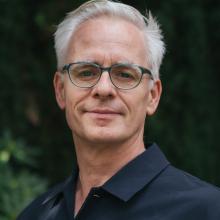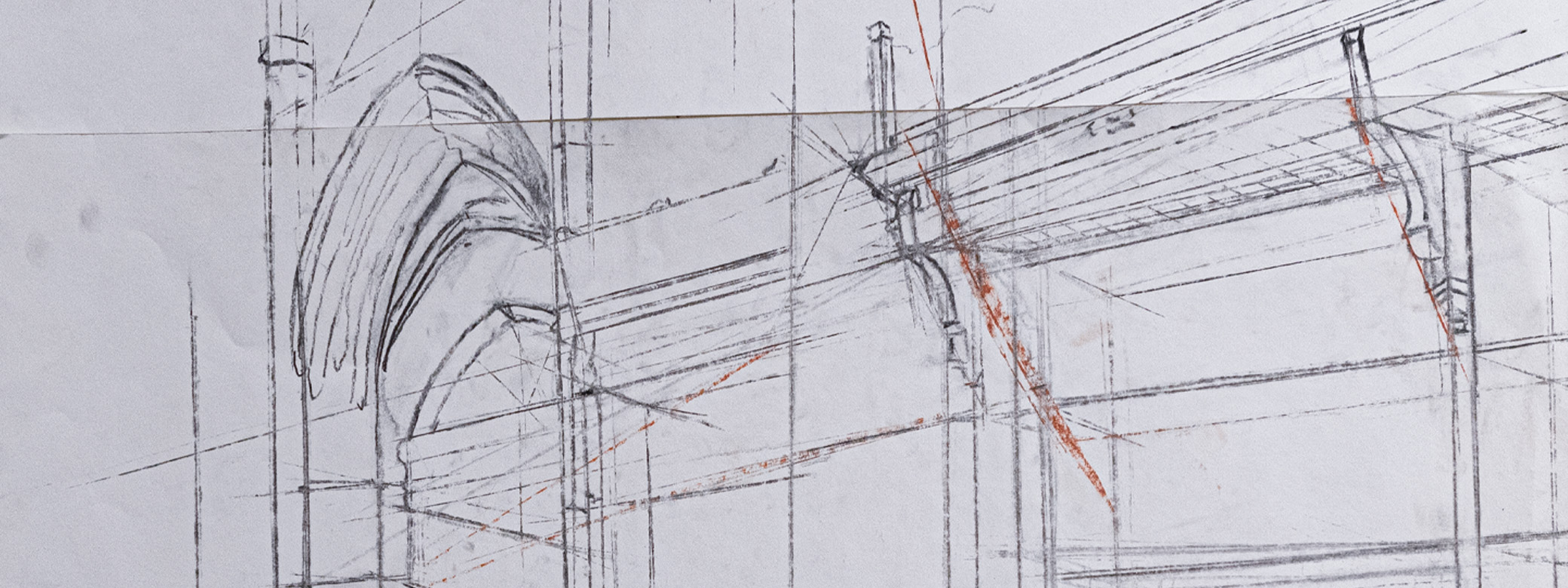
Associate Professor, Art History
Joff Hanauer Distinguished Professor in Western Civilization
Fields of Interest
Education
Biography
My research and teaching center on the nature and long reach of abstraction and the avant-garde through the shifting priorities of the contemporary within art and culture. Broader questions of the nature of modernism, abstraction and the potential of art to have an impact first emerged among the historical avant-gardes of the 1910s through 1930s, but these also extend into global contemporary art, (critical) heritage and memory. Already in the 1920s and 30s, a sizeable group of artists across Europe, all pioneers of abstraction and intermedial environments, were determined to change the world through art. They challenged nationalism, isolationism, and militarism and explored different aesthetic orders of transnational or cosmopolitan belonging with global aspirations. Particular interests are Piet Mondrian, Georges Vantongerloo, and De Stijl, as well as Kurt Schwitters, El Lissitzky, and artist-couples Katarzyna Kobro and Władysław Strzemiński and Sophie Taeuber-Arp and Hans/Jean Arp. I am fascinated by how these artists imagined they could migrate among or merge different artistic disciplines, making abstraction a cross-disciplinary, intermedial phenomenon encompassing the visual arts, architecture, music, literature, philosophy, and utopian theories. How and why do artists transgress the disciplinary boundaries of their medium, engage new aesthetic considerations, or find inspiration in scientific discoveries and historical and socio-political events? Where should we look today for artists who push their work into new territory, engaging the question of abstraction anew?
Current interests include contemporary forms of abstraction and critical heritage world-wide, particularly those that manifest in environments and installation art. Such spaces often galvanize inspired engagement, social practice, and equity and diversity, frequently through combinations of conceptual, embodied, and networked modalities that enable people to connect across national borders. Other interests include the notion of “multiple modernities” that inspire present forms of global art making and environmental activism, as well as the implications of “Bioart” and 3D printing, the latter sometimes described as the next industrial revolution. The possibilities of 3D printing and digital fabrication in art, architecture and design, and of an attendant “Maker Culture” that pursues creative innovation through technology and shared forms of creativity, are vast—with new aesthetic modalities emerging out of new relationships between form, content, materiality, medium, mediation, process and creativity. Similarly, bioartists blur boundaries between art and science, but also engage ethical questions by working with genetic materials, creating new, transgenic life forms, as seen in the work of Joe Davis. My broader interests are reflected in curatorial projects and exhibitions to which I have contributed through catalogs and consulting, such as a large Vantongerloo retrospective (Duisburg and The Hague, 2009-10), a major De Stijl exhibition (MNAM, Centre Pompidou, 2010-11), and an exhibition on Mondrian and his Studios (Tate Liverpool, 2014). I curated and co-curated “The Desire of the Museum” (Whitney Museum of American Art, 1989), an exhibition of Vantongerloo’s De Stijl-period sculptures, paintings, architectural drawings and models, furniture, and design (Centraal Museum, Utrecht, 2002), “International Abstraction: Making Painting Real” (Seattle Art Museum, 2003-04), “Resonance: Nature, Glass, and Standing Waves in the Art of Joe Davis” (Jacob Lawrence Gallery, Seattle, 2011), “Videowatercolors: Carel Balth Among His Contemporaries” (Henry Art Gallery, Seattle, 2011-12), and Joseph Sassoon Semah (Kunstmuseum, The Hague, 2020-21).
Expertise
Modern and Contemporary Art
Specialization
The historical avant-gardes and their legacy
Abstraction
Critical theory and interdisciplinarity
-
Selected Research
- “Origins of De Stijl: Painting as Architecture,” “The Gradual Evolution of Mondrian’s Neoplasticism,” “The De Stijl Environment: A Studio Utopia,” “Color and Line: Recovering Mondrian’s Lost Paintings and Broader Arc,” “A Modern Architecture, a Modern World: De Stijl’s Impact in the Built Environment,” for Mondrian y De Stijl, November 2020-February 2021, Reina Sofia, Madrid (Ed. Museo Nacional Centro de Arte Reina Sofía, 2020)
- “Mondrian’s Studio Wall in 1930: Color, Space, and Rhythm,” in First look, then see: Essays on Mondrian, Festschrift for Hans Janssen (Kunstmuseum, the Hague, 2020)
- “L’Aubette as Multimedia Spectacle of Colour and Movement.” For Into the Night: Cabarets and Clubs in Modern Art, October 1919-January 2020, Barbican Art Gallery, London, February-June 2020, Belvedere, Vienna (Prestel, 2019).
- Marek Wieczorek. "La composition de l’espace," in Kobro—Strzemiński, exh. cat. Musée National d’Art Moderne, Centre Georges Pompidou, Oct. 24, 2018—Jan. 14, 2019, eds. K. Ziebinska-Lewandowska and J. Suchan (Milan: Skira, 2018)
- Marek Wieczorek. "Philippe Vandenberg: Oedipal Resistance," Philippe Vandenberg: Kamikaze, Brigitte Kölle and Felicity Lunn, eds. Hamburger Kunsthalle and Pasquart Centre d’Art (Veurne: Hannibal, 2018).
- Marek Wieczorek. "Life in Plane Terms: De Stijl’s Impact on the European Avant-Garde" in Organizers of Life: De Stijl, the Polish Avant-Garde and Design, exh. cat. Muzeum Sztuki Łodz (Łodz: Muzeum Sztuki, 2017).
- Marek Wieczorek. "De Stijl: Still the Dutch Contribution to Modern Art" and "Mondrian's Path from Figuration to Abstraction” [in English and Portuguese] in De Stijl, exh. cat. São Paulo, Brasilia, Belo Horizonte, Rio de Janeiro (São Paolo: Centro Cultural Banco do Brasil, 2016)
- Marek Wieczorek. "Abstraction—The Contemporary Perspective," Oxford Encyclopedia of Aesthetics, 6 Vols., ed. M. Kelly (Oxford and New York: Oxford University Press, 2014).
- Marek Wieczorek. "Piet Mondrian's Studio Utopia, 26, rue du Départ," in Mondrian and His Studios: Colour in Space, exh. cat. Tate Liverpool, eds. F. Manacorda and M. White (London: Tate Publishing, 2014).
- Marek Wieczorek. "Mondrian's First Diamond Composition: Hegelian Spatial Totality in the Starry Sky," in Meanings of Abstract Art: Between Nature and Theory, eds. P. Crowther and I. Wünsche (New York and London: Routledge, 2012).
- Marek Wieczorek. "Rhythms of Life: The Reception of Mondrian's Victory Boogie Woogie," eds. M. van Bommel, H. Janssen, R. Spronk, Inside Out Victory Boogie Woogie: A Material History of Mondrian's Masterpiece (Amsterdam: University of Amsterdam Press, 2012).
- Marek Wieczorek. "De Stijl," in B. Leal, A. Lemonier, M. Wieczorek, et al., Mondrian/De Stijl, exh. album (Paris: Editions Centre Pompidou, 2010).
- Marek Wieczorek. "Le paradigme De Stijl," in De Stijl, ed. F. Migayrou, exh. cat. Musée National d'Art Moderne, Centre Georges Pompidou (Paris: Editions Centre Pompidou, 2010).
- Marek Wieczorek. "Life Raft in the Desert: Shawn Patrick Landis's Intervention in Double Negative," Sculpture, Vol. 27, No. 6, July/August 2008.
- Marek Wieczorek. "From Magneple to Videowatercolors: The Heart Beat in Balth's Oeuvre"; the lead essay in Heart Beat: Carel Balth(Amsterdam: Albee Books, 2006).
- Marek Wieczorek. "Piet Mondrian," Encyclopedia of Europe 1914-2004, eds. J. Winter and J. Merriman (New York: Charles Scribner's Sons, 2006).
- Marek Wieczorek. "Piet Mondrian's Turn from Cubism to Neoplasticism" and "Theo van Doesburg and Bart van der Leck in De Stijl," in Van Gogh to Mondrian: Modern Art from the Kröller-Müller Museum, exh. cat. Seattle Art Museum and High Museum of Art, Atlanta: 2004.
- Marek Wieczorek, Joe Davis (MIT Department of Biology), Dana Boyd (Harvard Medical School) and Hunter O'Reilly (University of Wisconsin, Biosciences Department). "Art and Genomics: Phenotype and Genotype in Genetic Art," in Nature Encyclopedia of the Human Genome, ed. D. Cooper (Hampshire: Macmillan Publishers Ltd., 2003).
- Marek Wieczorek. "The SmArt Gene (or, Are We Not Alone in Our Esthetic Universe?)," in Gene(sis): Contemporary Art Explores Human Genomics, CD-Rom exhibition catalog (Seattle: Henry Art Gallery, 2002).
- Marek Wieczorek. The Universe in the Living Room: Georges Vantongerloo in the Space of De Stijl -- Het heelal in de huiskamer: Georges Vantongerloo en de Nieuwe Beelding van De Stijl (Utrecht: Centraal Museum, 2002).
- Marek Wieczorek. "The Ridiculous, Sublime Art Of Slavoj Zizek," introduction, Slavoj Zizek, The Art of the Ridiculous Sublime: On David Lynch's Lost Highway (Seattle: University of Washington Press, 2000).
- Marek Wieczorek. "Terrorism and History Painting: Gerhard Richter's Blurry Images of Baader-Meinhof Murders," The Journal of Art, Vol. 2, Nr. 4 (January 1990).
Research Advised
- Miles Labitzke. "An Introduction to Contemporary Art." MA Practicum Project, University of Washington, 2019.
- Elisabeth Patterson. "Cézanne Becoming Cézanne: The Influence of Stendhal on the Painter's Theory and Practice after 1878." MA Thesis, University of Washington, 2012.
- Laura Stowell. "Alina Szapocznikow: Between Dreams and Daily Work." PhD Dissertation, University of Washington, in progress.
-
Autumn 2025
Spring 2025
Winter 2025
Autumn 2024
Winter 2024
Autumn 2023
Spring 2023
Winter 2023
Autumn 2022
Spring 2022
Winter 2022
-
